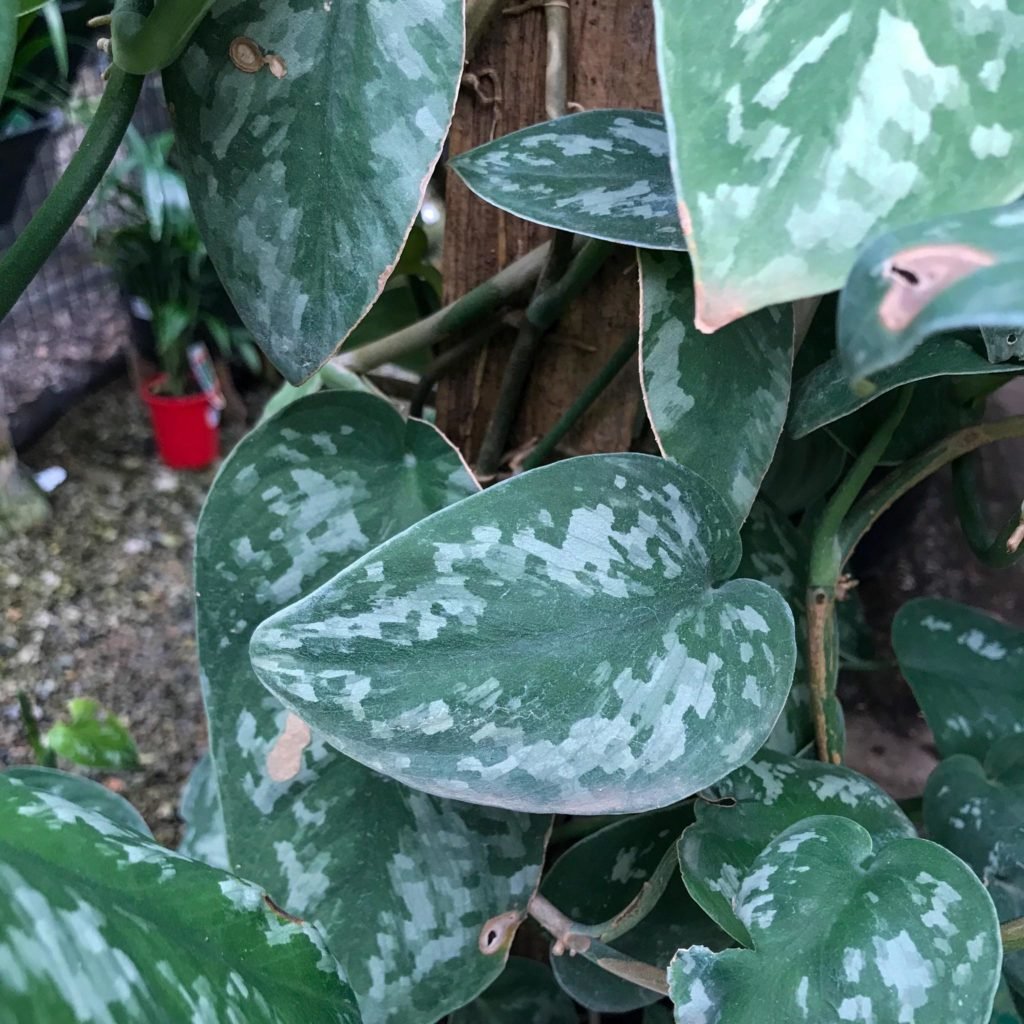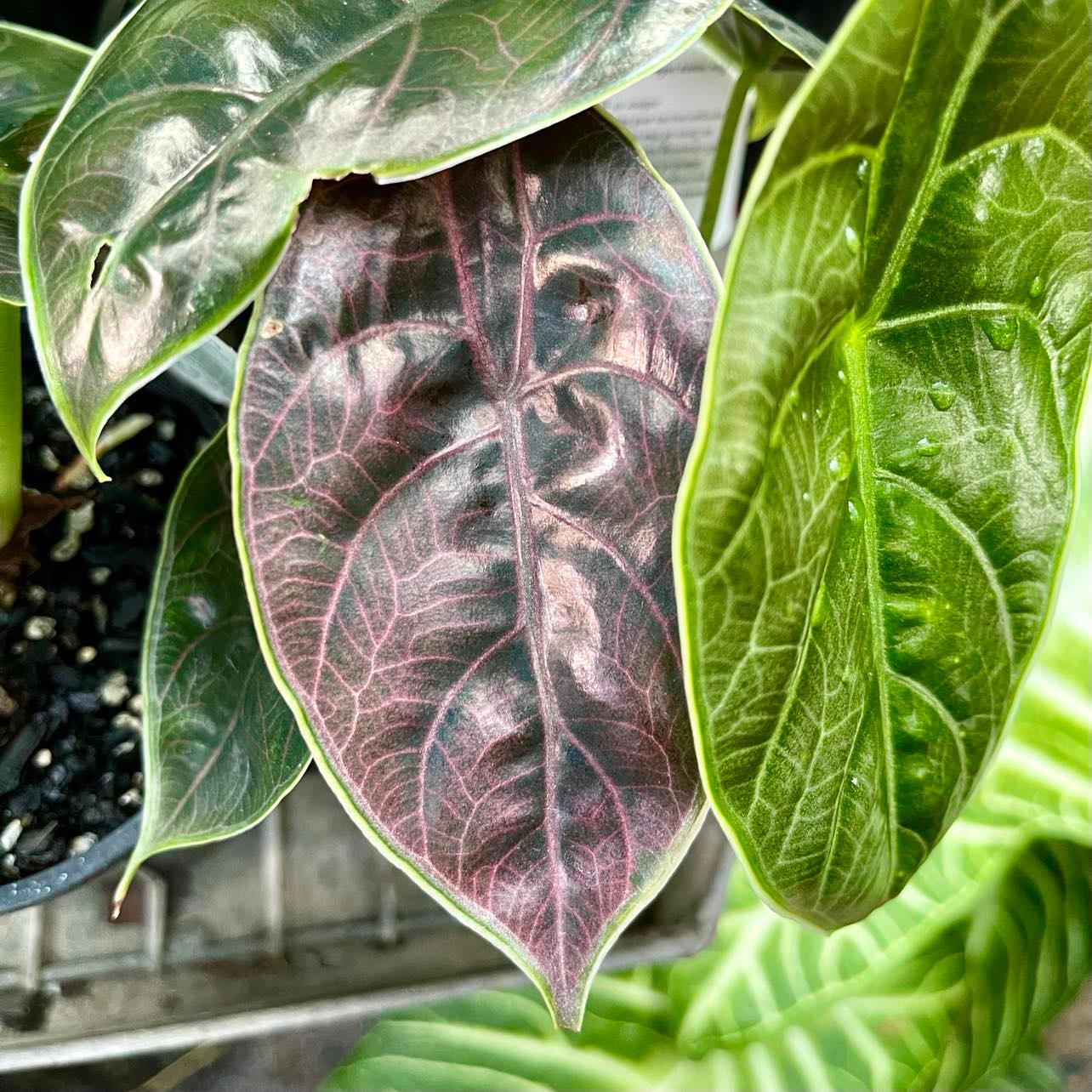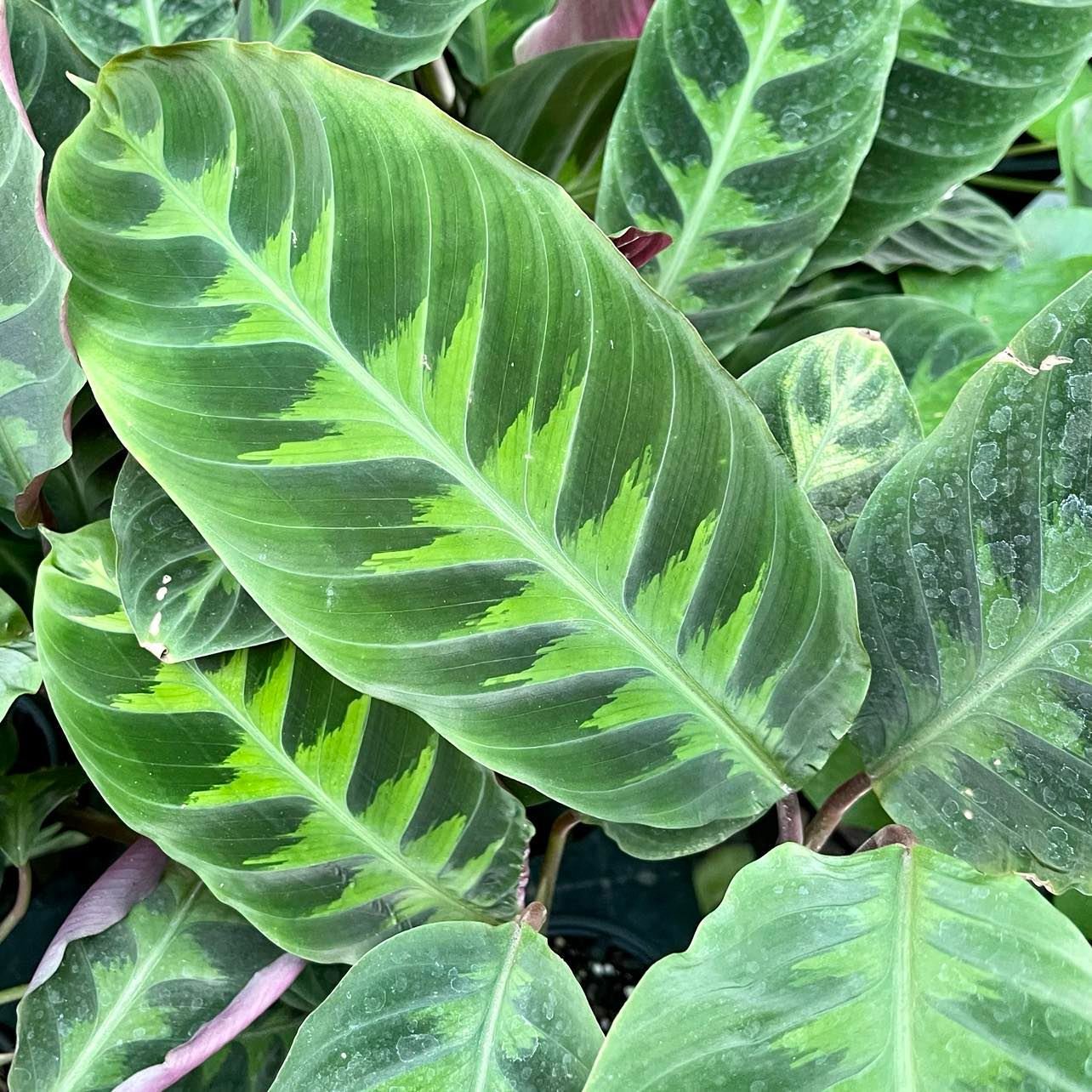Scindapsus Pictus a.k.a Silver Vine, Satin Pothos

Pothos Silver Satin Quick Overview
| Full Size | 6-8 inches |
| Light | Bright indirect |
| Temperature | 65-85°F (18-29˚C) |
| Humidity | Medium-high |
| Cost | $$ |
| Care Level | Easy |
| Toxicity | Toxic |
Scindapsus Pictus (silver satin pothos) makes a beautiful house plant boasting deep dark green leaves filled with sparkling silver splotches of variegation. Easy to care for this house plant is popular among collectors and beginners alike.
Size
When kept indoors in the correct conditions, you can expect your plant to reach 3-10 feet long (1-3 metres). Foliage on a mature plant will reach 6-8 inches (15-20cm) in length.
Scindapsus Pictus are great climbers and will take fondly to a moss pole or trellis, using aerial root nodes to anchor themselves. Alternatively hanging baskets can also be used for this to vine and cascade down.
Pothos Silver Satin Light Requirements
Pothos Silver Satin prefer to be positioned in bright indirect light for best growth and require this to thrive. A sign your Pothos Silver Satin is not getting enough light is your plant losing leaf markings, this can be resolved by changing the position of your plant to somewhere that better suits its light requirements.
Temperature
Pothos Silver Satin will perform best when in an area which maintains a temperature of 65-85°F (18-29˚C). For colder climates or seasons using a greenhouse is a great way to regulate temperature to help get through winter and or frost. An alternative to this is a warm indoor spot such as a bathroom or kitchen next to a window.
Pothos Silver Satin Humidity
Maintaining a medium to high humidity will assist in keeping your Pothos Silver Satin happy and healthy. If your plant is housed in a spot with a humidity level consistently outside of this range click here for tips on how to increase or decrease humidity levels.
Pothos Silver Satin Watering Requirements
You can expect your Pothos Silver Satin to require water when the top inch of soil is dry. When watering your Pothos Silver Satin be sure to water thoroughly allowing water to drain completely. The plant likes to be moist but not wet.
Aside from solely relying on the watering frequency to tell when your plant is thirsty, a tell tale sign that your Pothos Silver Satin needs water is the foliage starting to curl and wilt. Yellowing leaves are a sign that your plant is getting too much water and brown tips mean the plant is being kept too dry. Wilting leaves can also be a sign that your plant is too wet.
Pothos Silver Satin Fertilizing requirements
As a rule of thumb your Pothos Silver Satin should be fertilized monthly during its growing seasons (Spring & Summer). A liquid based indoor plant fertilizer applied away from the base of the plant is best. Make sure to follow the manufactures directions for dilution rates as each is different. Frequent Fertilizing will assist in keeping your plant alive as well as promoting healthy growth.
During the colder winter months it is unnecessary to continue fertilizing as plant growth is slowed or stunted. During this time your plant will enter a sort of dormancy and the nutrients it requires is greatly reduced. Over fertilizing can lead to issues such as wilting and discoloration of leaves or limp, black roots.
Pothos Silver Satin Soil Requirements
Pothos Silver Satin requires a rich, well draining soil. A premium indoor plant potting mix is recommended as this will provide adequate nutrients for healthy growth. The addition of perlite to the growing medium will assist in drainage.
Pothos Silver Satin Diseases & Pests
The most common diseases and pests that you can encounter whilst caring for your Pothos Silver Satin are root rot if over watered, spider mites and scale. For a wide range of information on combating a large range of indoor plant diseases and pests click here.
Pothos silver satin Toxicity
Pothos Silver Satin are considered to be toxic when eaten. For pets like cats and dogs it is not likely to cause death; however symptoms such as swelling of the mouth and surrounding areas is common and can cause irritation and pain.




